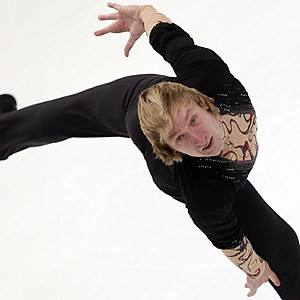 Hotel lobby
Hotel lobby
2010-2-7
By Yang Di
LOCATED in the hub of the commercial district adjacent to Jing'an Park, The PuLi Hotel and Spa is an epitome of class with a twist of nature, a place to find peace and tranquility in the middle of the hyper-active urban jungle.
With its resort-type environment, the complex sets a new benchmark for a unique yet pleasant experience. It is not just another business hotel but an urban resort.
Patrons are greeted by two rows of bamboo trees flanking the right and left of the driveway on approach to the hotel, immediately transporting them to another world.
Enter the hotel and sink into the ultra calming atmosphere imbued with contemporary elements and accents of traditional Asian charm, meet the reception staff or have a drink at the Long Bar in the lobby, and overlook a candle-lit reflection pond through the glass walls.
Impeccable attention to detail is evident from the consistent, warm "honey glow" custom designed light fittings, locally sourced Chinese materials such as dark local timbers, cast bronze and grey Shanghai brick, to the use of distinctly resort style elements. It exudes a sense of understated luxury and elegance.
"As we were interested in developing a residential feel to the hotel we did not want to waste much space on conventional hotel facilities such as the reception desk and concierge," said Johannes Hartfuss, owner and principal designer of Layan Design Group. "We consolidated all of these services together in one substantial bar called the Long Bar located parallel to the main lobby."
Another distinct feature in the lobby is a very cozy library with a massive fire place, comfortably decorated to make guests feel at home. It is a 5-meter-high space filled with bookshelves all around, offering a variety of publications in English and Chinese.
Open the door to each room or suite and a distinct Chinese feel dominates, without being overtly ethnic and traditional. A visual splendor spreads before you with a mixture of modern shapes combined with traditional local materials.
The carved timber screens, textured local grey brick walls, dark and grainy timber in combination with lightly honed sandstone and sand-colored wall-coverings create a sense of harmony. All finishes and materials are warm and soft, with the use of textures and matt finishes throughout.
"As for the rooms, we tried to maximize available space while opening the bathroom to the individual guestroom. There are very large-scale sliding panels in the rooms that allow them to be separated if needed. Otherwise it is open and spacious," Hartfuss said.
A nest of warmth and comfort, the rooms have their own character, featuring a dining table that also functions as a desk. The bathtub is located along the window, together with a huge daybed. Also, each room has separate "rainforest" shower and toilet cubicles, as well as cast bronze basins.
"The rooms feel somewhat 'furnished' rather than 'planned' which again enforces the idea of being in a home rather than in a hotel," Hartfuss said.
The facility has 209 rooms and 20 suites, with sizes ranging from 45 to 130 square meters, offering 24-hour dining as well as 24-hour concierge, laundry and valet services. Club floors from levels 20 to 26 comprise 61 rooms and suites, all of which will have a personalized butler service and are scheduled to open in the second quarter of the year.
As fine cuisine is an integral part of The PuLi experience, the second level is dedicated to Jing'An restaurant with three distinctive areas, a formal restaurant, central library and bistro lounge.
The third level has a state of the art gymnasium, 25-meter infinity lap pool and the first Anantara Spa in Shanghai.
"The hotel is a kaleidoscope of sights and senses waiting to be discovered, with a seamless blend of Eastern and Western elements," said The PuLi's general manager Martijn van der Valk.
The PuLi's unique concept is the brainchild of Urban Resort Concepts, founded by seasoned veterans in the hospitality industry, who believe that the running of a luxury hotel is as much artisan craft as it is a business.
- Address: 1 Changde Rd
- Tel: 3203-9999

The Deluxe Suite features a dining area where all finishes and materials are warm and soft, with the use of textures and matte finishes throughout






 BEIJING MINUS ATHLETES On Olympic Boulevard, a year after it was thronged with tourists, a lone guard patrolled last July. Susetta Bozzi/OnAsia.com
BEIJING MINUS ATHLETES On Olympic Boulevard, a year after it was thronged with tourists, a lone guard patrolled last July. Susetta Bozzi/OnAsia.com



 Tuesday, Feb. 9, 2010
Tuesday, Feb. 9, 2010



